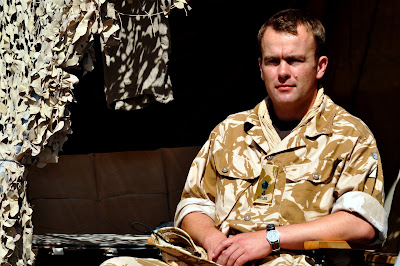
Soldiers from the Afghan and British Armies are conducting their first ever partnered engineering task.
Army engineers from Close Support Kandak, 3rd Brigade, Afghan National Army and 21 Regiment, Royal Engineers, are undertaking a programme of infrastructure works at Patrol Base Rahim, in Nahr-e Saraj, as partnered engineering teams.
Previously, Afghan Engineers were guided through their projects by soldiers of the Brigade Advisory Group. They are now working under their own commanders to complete a number of specialist engineering projects including erecting new accommodation and Patrol Base defences.

The Patrol Base is being expanded and upgraded to accommodate approximately 300 soldiers from the Afghan National Army and the British 1 Mercian Regiment.
Lieutenant Mohammed Khalid, the Afghan Engineers’ Platoon Commander, has worked alongside British troops for four years.
He said: “When we were in Shorabak [Afghan National Army camp], the British soldiers were giving us training. But now that we are here we are implementing that training.
“Wherever people are living, accommodation is important for them, and it is the same for soldiers. We came here to make accommodation for British and ANA troops. That is why it is so important.
“We have learnt as much as we can from our mentors. If we get the type of machinery and instruments that the British troops have, then hopefully we will be able to do all of this type of work for ourselves.”

The eleven Afghan troops are partnered with sixteen soldiers from 21 Regiment, Royal Engineers, led by Lieutenant Fran Bullock: “This is the first time ANA and UK engineers have partnered on a task like this” she said.
“Before, it was more of a mentored role through the Brigade Advisory Group. They were looking at what skills were necessary and trying to improve those skills back in camp.
“Now however, we are going out on the ground with them, working alongside them on an active site and putting all of that training into practice. This is an important step for them because it means their work has to be up to a certain standard.
“Together with the Afghans, we are constructing the ANA accommodation, the showering units and the force protection elements. We will also build a dedicated secure helicopter landing site and an entry control point, all for when the new troops arrive.

“They have an excellent plant operator/mechanic who drives the bulldozer. He is very proficient and able to do pretty much everything we have wanted him to do. They have also been working on basic carpentry and joinery and there are so many other roles that we will develop in time. Once this project is complete, we will feed back to the Brigade Advisory Group to identify areas for further training to equip them with the skills to be entirely self-sufficient and bring them up to an even higher standard of combat engineer trades”.

An expansion of the base will allow more troops to control the surrounding area, creating the conditions for stabilisation and reconstruction. A growing Afghan National Army presence is an important element in securing the support of the local population for the ISAF mission.

Sgt Archie Gemmell from 21 Regiment, Royal Engineers, works as Brigade Advisory Group mentor. He has trained the Afghan engineers for their current role.
“The Afghans are in the early phase of their skills development. The engineer Brigade Advisory Group before us did a fantastic job in bringing them up to their current level. We are here now, partnering them in order to bring them on that little bit further and to identify areas of future training.
“It can be challenging sometimes, but it is extremely rewarding. There are a few characters in there, just as there are with any UK soldiers. There can be real highs and lows, as you would expect from a unit in a new role, but we all get on really well and they appreciate the advice we can give them".

Many of the Afghans have received technical training, allowing them to use plant and machinery. Sergeant Mabeed, a bulldozer operator said: “I really wanted to be a plant operator, and now I am a plant operator and I am really enjoying my work. Everything I have learnt on this excavator has been from British troops over four years in Helmand.”
The commander of the Afghan engineers, Major Bahadar Khan, has welcomed his unit’s first active role: “The work of an engineer is so important because whenever our soldiers deploy somewhere they need accommodation, showers, toilets, and this sort of thing. If engineers are not here, who is going to build these things?
“At the moment they are getting training, but after the training, god willing, our soldiers will be able to run this sort of project themselves”.

The joint engineering task at Rahim is the first of a number of planned partnered projects. The Afghan National Army will increasingly undertake projects of a similar scale without any assistance from ISAF and UK forces.
Picture Credit: Captain Philip Atkinson SCOTS
 Constable Billy Hayes with the team
Constable Billy Hayes with the team



















































